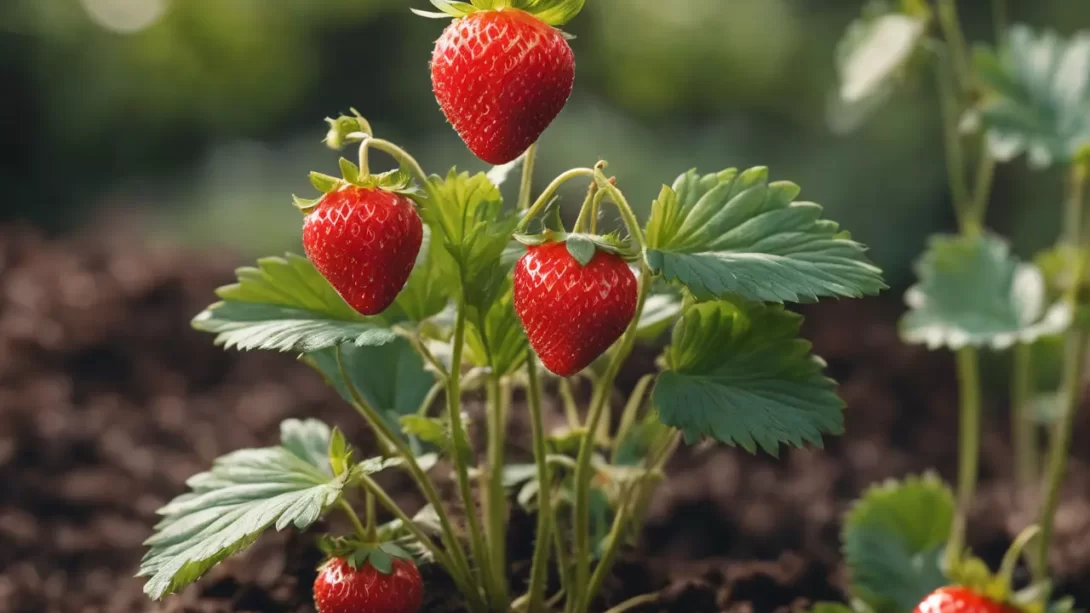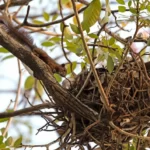In the fertile landscapes of North Carolina, where the seasons paint a vibrant canvas and the soil whispers tales of agricultural traditions, the allure of homegrown strawberries captivates the hearts of many growers. Yet, the secret to a flourishing strawberry harvest lies not only in the act of planting but in the careful synchronization with nature’s rhythms. Welcome to a guide that unveils the art and science of when to plant strawberries in North Carolina, offering growers across the Tar Heel State insights into the optimal moments for cultivating this sweet and beloved berry.
North Carolina’s Climate
North Carolina, a state graced with both coastal plains and mountainous terrains, boasts a diverse climate that plays a pivotal role in successful strawberry cultivation. From the chill of the mountains to the warmth of the coastal regions, the state experiences a spectrum of temperatures. Understanding these climatic nuances becomes the foundation for mastering the delicate dance of strawberry planting. As we delve into the intricacies of North Carolina’s climate, growers gain a deeper understanding of how to harmonize their strawberry plantings with the rhythm of the Tar Heel State.
Strawberry Varieties Suited for North Carolina
In the symphony of strawberry varieties, not all berries resonate harmoniously with North Carolina’s climatic notes. Enter the stage, strawberry varieties well-attuned to the state’s diverse conditions. Varieties such as ‘Chandler’ and ‘Albion’ stand as resilient performers, showcasing cold tolerance and disease resistance. Meanwhile, ‘Camarosa’ and ‘Sweet Charlie’ find their stride in the warmer coastal plains. Each variety brings its unique set of characteristics, tailored to the specific demands of North Carolina’s climate. By selecting the right strawberry varieties, growers ensure a fruitful harvest that echoes the vibrant spirit of the Tar Heel State.
Optimal Planting Time
Timing is the conductor’s baton in the orchestration of a successful strawberry planting in North Carolina. The optimal planting time typically takes center stage in the fall, a strategic window that aligns with the state’s moderate temperatures. This period, spanning from late September to early November, allows strawberry plants to establish robust root systems before the onset of winter. By planting during this symphony of seasons, North Carolina growers set the groundwork for resilient growth, ensuring that each strawberry plant is well-positioned to bear the fruits of success come spring. The careful alignment of planting with North Carolina’s mild fall climate serves as the prelude to a sweet and bountiful performance.
Fall Planting Guidelines
As the autumn leaves begin their graceful descent, North Carolina growers follow a set of fall planting guidelines, akin to sheet music guiding the melody of their strawberry cultivation. The first movement involves the selection of quality strawberry plants, ensuring they are free of diseases and adapted to North Carolina’s diverse climates. Fall planting depth, typically around eight inches, provides the young plants with protection against the winter chill while allowing for a healthy emergence in the spring. Adequate spacing between plants, usually 12 to 18 inches, orchestrates optimal growth and airflow. Fall planting guidelines also include the preparation of the soil, emphasizing well-drained earth enriched with organic matter. The careful composition of these guidelines sets the stage for a successful strawberry production, where each plant promises to echo the essence of North Carolina’s soil and climate.
Spring Planting Considerations
While the fall planting crescendo takes the spotlight in North Carolina’s strawberry cultivation, the symphony allows for a potential spring serenade in regions with milder winters. Especially in the coastal plains, growers might consider a spring encore for strawberry planting. This alternative arrangement, typically performed in late February or March, offers a later start to the season and provides an alternative rhythm for strawberry growth. Growers opting for this spring melody should choose early-maturing strawberry varieties, adjusting planting depth and post-planting care to the seasonal shift. The spring planting consideration adds a versatile note to the strawberry cultivation ensemble in North Carolina.
Soil and Site Preparation
The overture to a successful strawberry bed in North Carolina begins with the careful composition of soil and site preparation. Growers, playing the role of both conductor and composer, select well-drained sites that bask in the sunlight, creating optimal conditions for strawberry growth. Soil preparation, a vital prelude, involves enriching the soil with organic matter, ensuring it is loose, well-aerated, and ready to cradle strawberry roots. The partnership between soil and strawberry unfolds as North Carolina growers prepare the stage for roots to weave and berries to flourish. As the curtain rises on the planting season, the careful attention to soil and site preparation ensures a receptive environment for strawberries to thrive, promising a flavorful performance in North Carolina gardens.
- You will receive (2) 1.5-cubic foot bags per purchase.
- Delicious fruits and berries are the result of the accumulation of just the right balance of nutrients taken up by the plant. This mix is made to pump up your blooms, fruits and berries with no hang-ups.
- Specially formulated to encourage fruiting and flowering characteristics in plants like herbaceous species, barriers, melons, flowers and bulbs.
- Microscopic fungi (mycorrhizae) colonize directly onto the roots, which helps enhance root efficiency and encourage nutrient uptake and enhance production.
- Ingredients include 35-45% coco fiber, sphagnum peat moss, aged forest products, perlite and fertilizer. Derived from earthworm castings, oyster shell and dolomite lime.
Mulching and Summer Care
As the North Carolina sun ascends to its zenith, growers embark on a protective duet for their strawberry beds through mulching and meticulous summer care. Mulching becomes the guardian against the summer heat, conserving precious moisture and suppressing invasive weeds. A blanket of organic mulch, such as straw or pine needles, acts as a shield, ensuring that strawberry plants remain hydrated and shielded from the scorching sun. Summer care involves vigilant watering to combat aridity and providing shade during peak heat. The collaborative performance between mulching and summer care transforms the strawberry bed into a sanctuary, allowing plants to thrive despite the spotlight of North Carolina’s summer sun.
Strawberry Harvesting and Maintenance
As the seasons waltz towards fruition, the climax of the strawberry cultivation journey unfolds—the harvest. In North Carolina, the ideal time for harvesting strawberries typically arrives in late spring to early summer, when the berries reach their peak ripeness. Growers, stepping into the role of harvesters, delicately pluck the ripe berries from the plants, ensuring a careful and bountiful harvest. The harvested strawberries then transition into the spotlight of ongoing maintenance, including pest control, disease prevention, and regular watering. This post-harvest care ensures the longevity and productivity of strawberry plants, setting the stage for future seasons of sweet success.
- A Must for DIY Growers: Explore the ultimate solution for DIY growers with Big A Fertilizers’ Berry Fertilizer, specially crafted for cultivating organic fruits and veggies. Whether you’re a gardening enthusiast or searching for a unique gift, this product is tailored to meet your needs.
- Excellent Results: Unlock exceptional results with our fruit nutrients, meticulously designed for both indoor and outdoor berry growth. Enjoy consistently bigger, sweeter, and juicier harvests, elevating the overall quality of your berries. It serves as raspberry fertilizer, strawberry fertilizer and an all round organic fruit fertilizer.
- Organic and Safe: Distinguish our plant fertilizer from others on the market; it’s meticulously crafted with premium organic ingredients, ensuring safety and top-notch quality. The unique blend of minerals and vitamins contributes to the health and vitality of your berries. We have our berry fertilizer organic and strawberry fertilizer organic and we are proud to be the organic choice for fertilizers.
- Incredibly Versatile: Embrace the versatility of Big Berries mineral supplement, catering to various berries like strawberries, raspberries, blueberries, blackberries, and more. This organic fertilizer is optimized for different berry types, guaranteeing optimal results. Strawberry plant food, blueberry bush fertilizer – this plant food fruit fertilizer is as flexible as they come. More than just berry tone fertilizer, this is a berry tone organic fertilizer.
- Easy to Use: Simplify your gardening experience with our Blueberry Fertilizer, packaged in convenient 13.5oz resealable pouches. Clear instructions make application a breeze, and the pouches are packed with essential tips and tricks, making it the ideal choice for DIY enthusiasts.
Conclusion
As the curtain gently descends on this guide to planting strawberries in North Carolina, growers across the Tar Heel State are invited to take a bow, armed with the knowledge of when to plant, how to care, and when to harvest for a flavorful yield. The harmonious dance of strawberry cultivation in North Carolina, influenced by diverse climates and seasonal rhythms, promises not just a harvest but a culinary journey. May the strawberry beds of North Carolina gardens continue to flourish, weaving a tale of resilience and flavor that echoes the unique spirit of the Tar Heel State.







